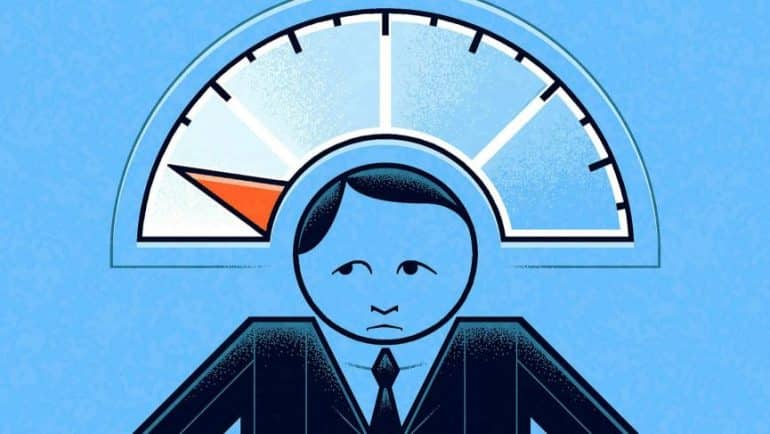by Ruchir Sharma in the Financial Times
By the end of 2020, many economists saw something positive in the pandemic. The housebound world has adopted digital technology at an accelerating pace. Productivity was increasing. Perhaps the long, debilitating decline in productivity growth was over.
Alas, after peaking above 3%, the productivity surge collapsed, revealing that it was a flash in the pan, as is often the case in the early stages of a recovery, when businesses are slow to hire new workers.
This leaves a great paradox unresolved. Since the 1970s when the computer age began, we have been living with a sense of accelerating progress and innovation. However, as the computer age began, the post-war productivity boom ended. Except for a revival around the turn of the century, productivity has been on a downward trend for more than 50 years.
Optimists say that innovations like Internet search are often free, and thus fail to register in productivity metrics, or that the impact of technology comes in waves. The productivity revival that began in the late 1990s came from checkout scanners and other digital inventions implemented in retail stores. The impact of newer advances like artificial intelligence will come, they say, just wait.
Pessimists respond that in earlier eras capitalism produced advances such as electricity and gas engines, which increased productivity in all industries. Now it's causing distractions — digital games and social media.
But a closer look at the timing and location of the productivity decline points to an alternative explanation: the expanding role of government.
It is more than a coincidence that starting in the 1970s, the major capitalist countries began running budget deficits, in good times and bad. Big bank and corporate bailouts have become more sweeping since the early 1980s. Government stimulus measures (both monetary and fiscal) have broken records in the last three major crises, and soared in advanced economies to more than 7% of GDP in 2001, 12% in 2008 and 45% in 2020.
With increasingly generous bailouts, corporate defaults have fallen in each crisis, even though recessions have gotten steeper since 2000. This decline has been most dramatic in Europe, where the default rate of speculative corporate credit has fallen from around 20% after the recession of 2001 to 10% after 2008 and 5% in 2020.
As the cathartic effect of bankruptcies and economic downturns faded, so did business dynamism. New business creation plummeted, leaving behind a stock of fewer older, larger companies. The number of publicly traded US companies has halved in recent decades. The largest survivors are improving their share in three out of four US industries. and get an increasing share of the profit.
More active state support has undermined creative destruction, which is the "oxygen" of capitalism. Productivity growth declined further after the 2008 global financial crisis as bailouts and stimulus measures increased significantly. In advanced economies, productivity growth slowed to just 0,7% in the 2010s – less than half the rate of the already declining trend of the previous three decades.
This decline, however, was not truly global. For most of the past half-century, productivity has risen steadily in emerging countries, from below zero in the late 1970s to peak above 5% in the late 2000s. While advanced economies have increasingly socialized economic losses during that period, China and later India turned to more market-oriented economic systems.
Despite a setback in recent years, new data show that productivity in emerging countries still grew by 3% in the 2010s — above the trend of previous decades. Since 2010, almost all developed countries have seen a decline in productivity.
"Big government" has merit as an explanation for the productivity paradox. First, it does not require skepticism about new technology. It may also account for strong productivity growth in emerging countries, where the role of the state has declined more broadly since the 1970s. It is not based on the idea that productivity growth from digitization escapes clear measurement, which cannot to explain why this boost was easy to measure during the tech revival around 2000, but impossible before and after.
It also fits the schedule better. As government interventions increased, the cumulative impact began to overwhelm the push from technology. Studies link the decline of recent decades to the beneficiaries of government support, including bloated financial markets, monopolies and zombies – lifeless companies surviving on new debt.
Zombie companies were almost non-existent in 2000, but now represent 20% of listed companies in the US and higher shares in Europe. The rise of the "zombie economy" has been linked to the increasingly easy flow of money from central banks, amid warnings that zombie companies are undermining productivity across industries by siphoning resources from more vibrant firms.
Now comes a twist. Inflation is back, possibly ending the era of easy money, which may in turn remove some of the obstacles blocking a new wave of productivity. But easy money is only one facet of "big government," which has established itself as a new government culture of bailouts, market bailouts, and constant stimulus measures. To revive productivity, the government needs to rethink its role in the economy.
Source: Financial Times, euro2day.gr
